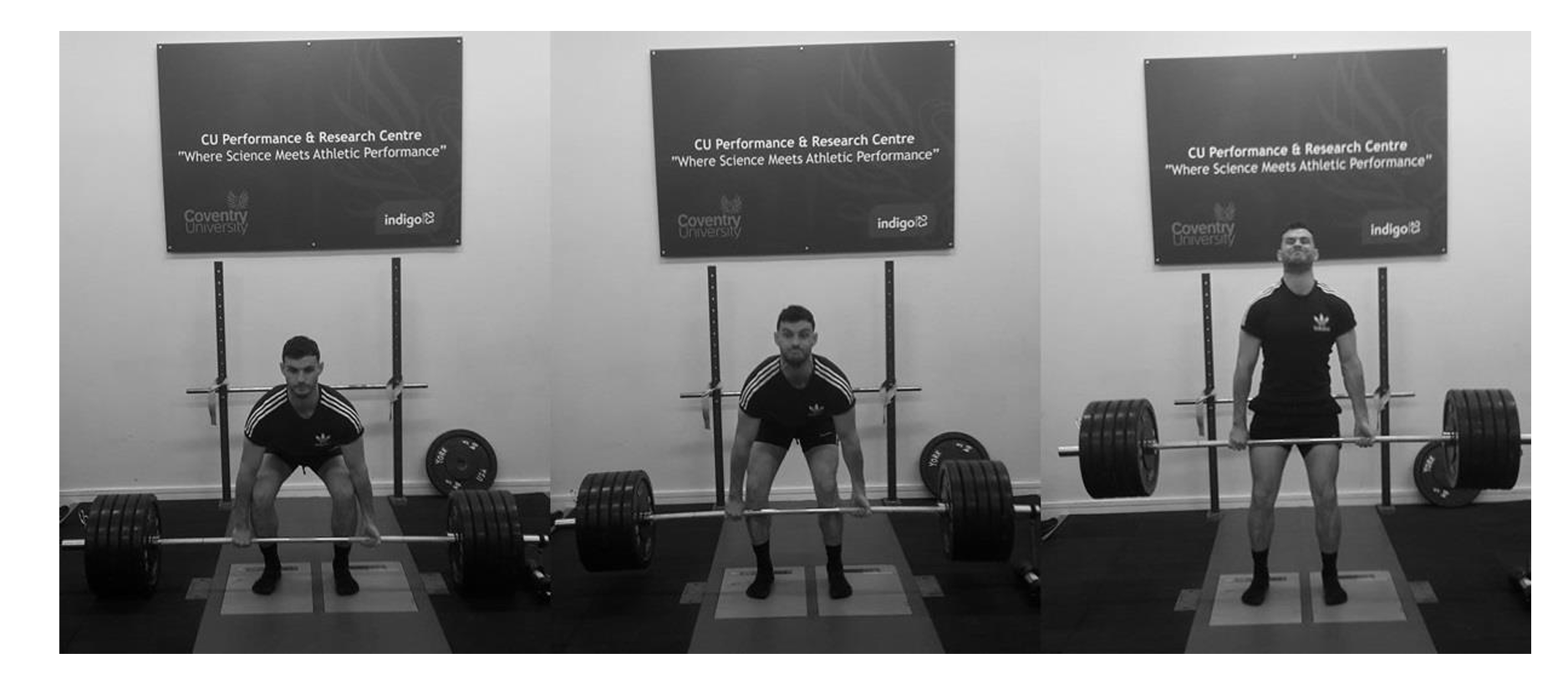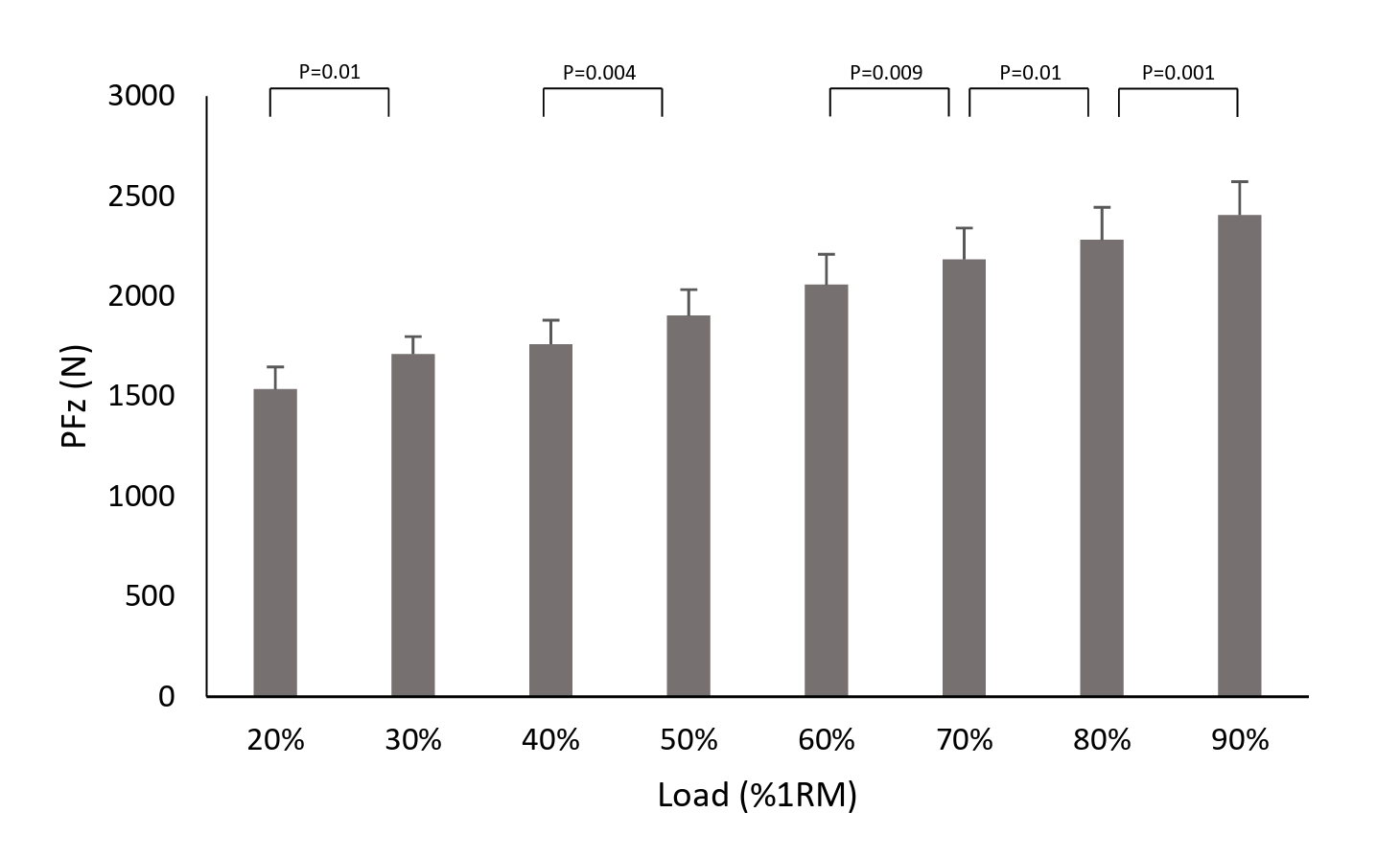In most sports, athletes don’t just need strength, they need force fast.
That’s where Peak Force (PF) and Rate of Force Development (RFD) come in.
- PF = total force produced
- RFD = how quickly that force is produced
These qualities can and should be trained. Which begs the question:
Is there an optimal load in the deadlift to increase PF and RFD?
This 2021 study addressed this exact question, using force plates to test 12 trained athletes across 20–90% of their 1RM.
Here’s what they found, with some key takeaways from your programming.
Study Setup
- 12 strength-trained males (avg. 25 years old, 6.5 years of training experience; 1RM average: 165 kg)
- Each participant deadlifted 3 reps at 20%, 30%, 40%, 50%, 60%, 70%, 80%, and 90% of 1RM.
- All lifts done on a force plate recording at 1000Hz to capture PF and RFD.
- Loads performed in random order with the best rep per load was analyzed

The Results
Peak Force (PF) Increased Linearly
The heavier the load, the more force was produced—no surprise here.
- 90% 1RM had the highest PF.
- PF increased significantly at most intervals, except:
- 30% vs 40%
- 50% vs 60%

RFD Was Higher at Heavy Loads, but Not Dramatically
Instantaneous RFD was:
- Significantly higher at 80% and 90% vs. 20%
- But there were no significant differences between moderate and heavy loads (30–70%)
- RFD values showed high variability across participants

3. Baseline Strength Didn’t Matter
The researchers re-ran all stats with 1RM as a covariate.
- Stronger lifters did not respond differently; same PF and RFD patterns.
- This means these findings apply across a range of trained lifters, not just elite athletes.
What This Means for Coaches
There’s no single “magic” load for explosiveness.
Yes, PFz increases with heavier weight. But RFD doesn’t change much after 30%.
Lift heavy to build force.
Use 85–90% 1RM ranges to train PFz.
Train RFD at any load with maximal intent.
Fast intent, not just load, is key to explosive strength.
Use a range of loads across your program.
Heavier lifts for force, submaximal loads for velocity, and volume, with the cue to move fast.
Programming Tips
Here’s how you might apply this:
- Day 1: Heavy Deadlift Day
- 3–5 sets of 2–3 reps @ 85–90% 1RM
- Long rest, focus on intent and tension
- Day 2: Dynamic Effort Day
- 6–8 sets of 2 reps @ 60% 1RM
- Accelerate like you’re trying to rip the floor up
Think load for peak force, and think intent for rate of force.
Bottom Line
The results of this study are clear and apply beyond just the deadlift exercise:
- Want to build force? Go heavy.
- Want to build explosiveness? Intend to move fast.




